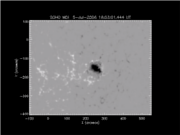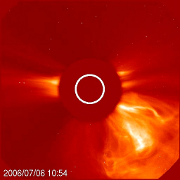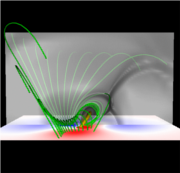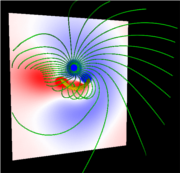
Filament eruptions, flares, and coronal mass ejections (CMEs) have been recently interpreted as different observational manifestations of a more general process, namely the sudden and violent disruption and reconfiguration of a portion of the coronal magnetic field (see, e.g., Forbes (2000)). For the most powerful events, these three processes happen almost simultaneously. Virtually all models currently tested for explaining CMEs and their observational signatures assume that the pre-eruptive magnetic configuration is given by a low-lying, sheared or twisted core magnetic field that, in its dips, may sustain cold material against gravity (modelling the filament). Such a structure needs to carry enough free magnetic energy for an eruption, but is nonetheless stabilized by the ambient coronal field. An eruption is triggered if the force balance between the core field and the ambient field is destroyed, either by increasing the shear or twist in the core field, or by weakening the restoring force of the ambient field (see, e.g., Aulanier et al. (2010)). CME and filament eruptions correspond to the rapid acceleration and expansion of the flux rope which follows the (unstable or catastrophic) loss of equilibrium. Finally, reconnection events that occur during the whole process of re-organization of the magnetic field are responsible for the flaring activity.
One of the many mechanisms that has been suggested to trigger eruptions is the rotation of sunspots (first proposed by Stenflo (1969)). Such a rotational motion is often linked with the transport of helicity within a flux rope from the convection zone into the corona. Whatever the origin and nature of such rotational motions, they are normally supposed to add twist to an existing flux rope (or even to form a rope, see Amari et al. (1996)). In this framework, such motions twist the core magnetic field until the equilibrium cannot be longer maintained and the field erupts (eg. by increasing the twist until a kink instability sets in). What has not been studied yet, and is the subject of this page, is whether twisting up the field overlying an existing flux rope can lead to the eruption of the rope itself. Therefore, differently from previous works, here twisting is not affecting the flux rope directly, but rather its ambient field. Such configurations, where the erupting filament is not rooted in the rotating sunspot but rather in its proximity, are indeed observed, and we report on one of them below.
The CME event described and modeled here took place on 6 July 2006. Animation 1 shows the MDI time evolution of the sunpot from 3 until 7 July, when a clear counter-clockwise rotation of the sunspot can be detected. From the MDI sequence of images, the sunspot's rotation can be quantified (Figure 1), and estimated in 10 degrees per day during the considered time span. The event was a textbook two-ribbon flare with filament/CME eruption, type II burst, as well as very distinct coronal dimming regions. The flare was of class M2.5/2N, with peak emission occurring on 6 July 2006 at 08:37~UT, and located at the heliographic position S9, W34 degrees. The flare was accompanied by a filament eruption and a halo CME, the latter being most prominent in the southwest quadrant (see Animation 2) and reaching a linear plane-of-sky velocity of about 900 km/s (Temmer et al. (2008)). Animation 3 shows the filament eruption in Hα, where the position of the filament before eruption can be clearly seen as a long, dark strand south of the sunspot, with a parallel smaller strand in between. In Animation 3, also the ribbon formation and evolution can be easily followed. Form the TRACE 171Å running-difference movie (Animation 4) the time evolution of the CME front and filament locations during the early stage of the eruption can be obtained.
We model the event on 6 July 2006 with a stable flux rope embedded in an external field that changes under the effect of a constant rotation of one of its polarity. The initial potential field is constructed in such a way to resemble the MDI line of sight magnetogram in its photospheric distribution (see numerical details), while the flux rope is approximately located at the position of the filament with respect to the negative polarity (see also Animation 3). The leftmost panels in Figure 2 (corresponding to the time t=0) shows this inital condition (after a preliminary relaxation and before twist is applied), with the field lines of the flux rope in orange and those of the the external field in green. Note the asymmetry in the potential field. Also, on the green field lines north and south of the sunspot a large gradient in connectivity can be inferred, best visible in the top left panel of Figure 2. This is a typical indication of the presence of a quasi-separatrix layer, which has strong consequences for the evolution of the system, as we show below.
During the MHD simulation, the negative sunspot is rotated by applying a constant photospheric vortical motion, and the magnetic field evolves in response to the rotation. Figure 2 shows snaphots of the numerical simulation at t=0, 84, 233, 271 Alfvén times, while movies of the same evolution can be seen in Animations 5 (side view) and 6 (top view). As the vortex motions are applied, the field lines rooted in the potential field flux concentration become increasingly twisted, and starts to expand and rise with increasing velocity. As a consequence of its expansion, the field overlying the flux rope weakens the stabilizing tension on the flux rope, that start rising slowly. In this phase, the flux rope is adjusting quasi-statically to the change in the enviroment field, and can be seen comparing the first two panels of Figure 2 (at t=0 and t=84). At some point there is a transition to rapid acceleration, which resembles very closely the onset of the torus instability in more symmetric configurations. This acceleration of the flux rope can be visually seen in the last two panels of Figure 2 (t=233 and t=271), as well as in Animations 5 and 6. Figure 2 also shows that the direction of the eruption is strongly influenced by the asymmetry of the external field, leading to a clearly lateral eruption. Shortly after the onset of the instability the flux rope starts reconnecting with the ambient field. This is due the presence of the quasi-separatrix layer in the inital field right above the rope (see Case 7 for an explanation of quasi-separatix layers). From this point onward, we do not consider the simulation to reproduce the observations any longer: the presence of the quasi-separatrix layer is a limitation of our initial configuration, rather than a general property. However, the simulation up to this point in time shows conclusively that the flux rope is destabilized by the weakening of the overlying field due to the sunspot rotation.
In summary, we have shown how the rotation of a sunspot can indirectly destabilize a flux rope by weakening the overlying field rooted in it, leading to the flux rope rise and subsequent acceleration pertaining to launching of CMEs.
This work was submitted in June 2011 to Astronomy & Astrophysics: T. Török, M. Temmer, A.M. Veronig , L. van Driel-Gesztelyi, B. Vršnak, G. Valori “CME initiation by sunspot rotation”
| @ |

|
T. Török, L. Van Driel, G. Valori, J.-M. Malherbe (Obs Paris) in collaboration with KU Leuven, HVAR, UNIGRAZ, UGOE |

|

|

|








